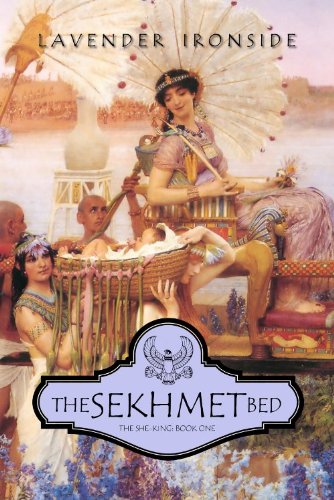The Sekhmet Bed
Amonhotep left only daughters of royal blood, and Egypt never before had a woman pharaoh. When political expediency made the common-born but popular general Thutmose the next pharaoh, it was not the elder but the younger daughter, Ahmose, who was chosen to be his foremost queen. Ahmose was special. She was in contact with the gods and spoke with them, and this ability would put her at Thutmose’s side, guiding him. She would not, however, bear him any sons, which she told him, but a vision he had of her holding a golden child who would succeed him as pharaoh closed his ears to her pleading. Her sister, also wed to Thutmose, produced male after male children, but Ahmose only produced a daughter, Hatshepsut, who would be the She-King of Egypt.
This novel focuses on Ahmose, her fear of childbirth, her vulnerability to her older sister’s nasty tricks, and to her own entirely too forgiving nature. More than that, it is about Ahmose’s struggle to convince the husband she loves to make his daughter his heir.
Ironside has delved deep into the history of Ancient Egypt, using the authentic names for cities later renamed by the Greeks, and fitting characters any modern reader will recognize into a believable setting that otherwise might have obscured the very human story of a young woman caught between loyalties. Ahmose is a serious, earnest character, refreshingly flawed for this type of historical novel; she makes mistakes, feels guilt and doubt, and struggles with moral issues. Nor are the other characters two-dimensional cartoons: the older sister is not evil, just jealous, and the pharaoh often feels caught in an impossible situation.
This is not a historical fashion show, like too many historical novels about women. Only someone like Ahmose could have brought forth one of the great pharaohs of Egypt’s ancient past, the great She-King Hatshepsut










